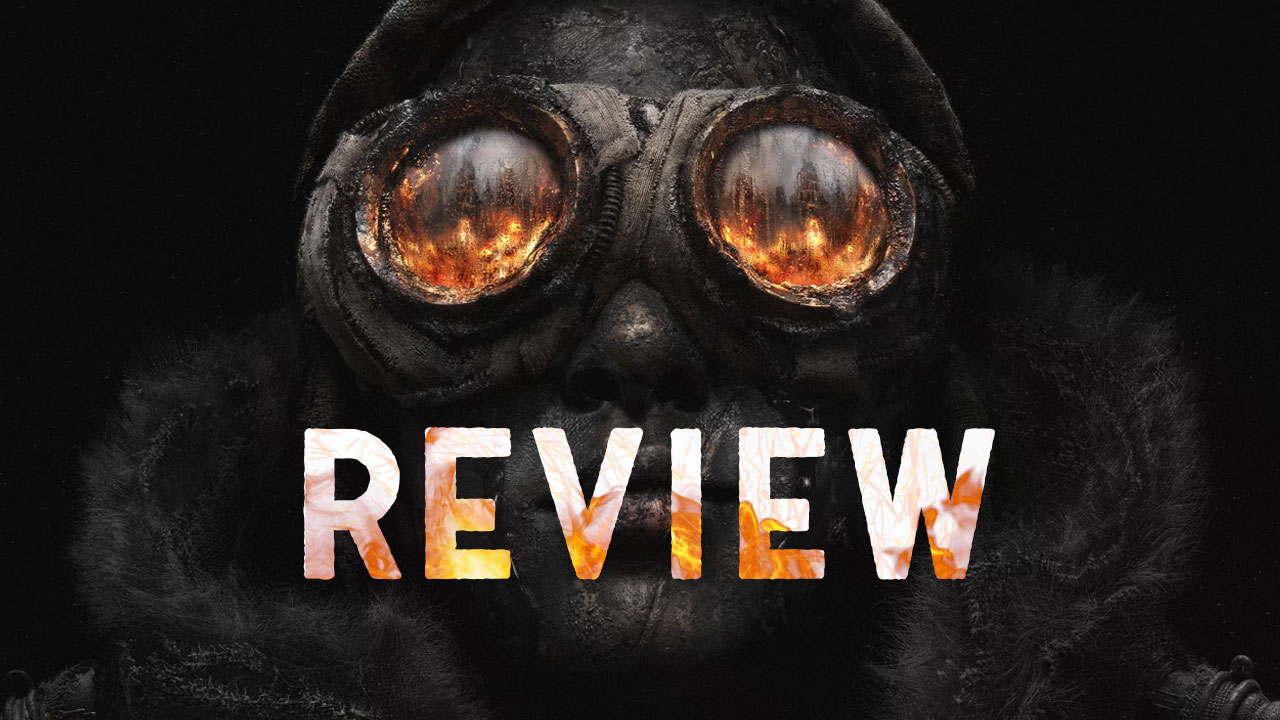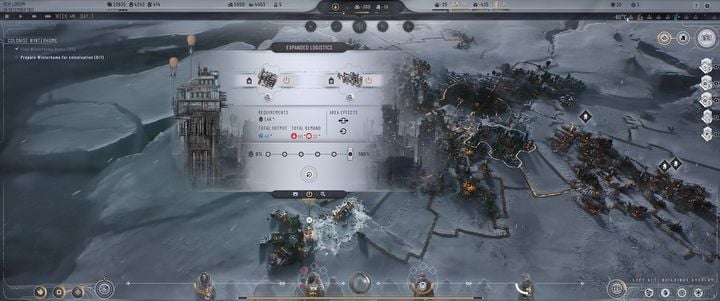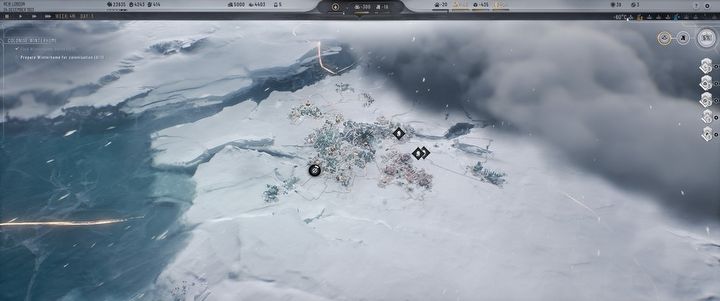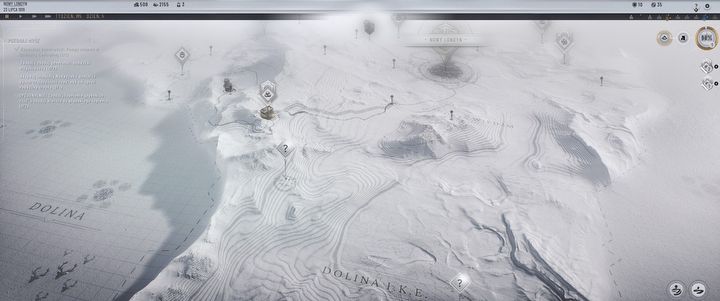Frostpunk 2 Review: An Example That Risk Pays Off
Frostpunk 2 is both a sequel and a new start for the franchise. Despite my concerns, this marriage turned out great.
The review is based on the PC version.

11bit Studios has kept us waiting a long time for a sequel to Frostpunk. Many city-building games have been released in the market over the past five years, exploring different periods and settings. So the Poles had a tough nut to crack. Make a direct sequel, improve the gameplay, or take a risk and try to change more than anyone expected...
A risk that paid off
If you've been keeping up with any Frostpunk 2 news, you'll know that the second path has been chosen. Expanding on the foundations set in 2018, it was decided to improve the mechanics that rule the game. On one hand, we have an entry following the typical path of "more and better of the same" sequels. On the other hand, the decision was made to shift the main focus of the gameplay towards interpersonal interactions and the conflicting ideologies of the factions present in the game. Even at the slight cost of micromanagement typical of this genre. And don't think that this means simplifying the gameplay. On the contrary, Frostpunk 2 is more challenging than the original because of the faction frictions that we need to cleverly navigate to prevent our city from going up in smoke during the riots.
So we talk to representatives of factions, suck up to their leaders, promise to push through laws in exchange for support... In a word, we are typical flesh-and-blood politicians. Only later, a city steward, trying to survive the frosts. In the early stages of the game and at lower difficulty levels, this aspect of gameplay seemed unnecessary, and I responded to it according to the given events. However, the larger the city to which I accepted people from Frostland, the more I felt the ideological differences that pushed two of the four factions into extremism, ultimately ending in civil war. Could I have prevented it? I have no clue, but my decisions and disregarding the requests definitely didn't help me resolve the subsequent conflict.
Of course, the easiest path to victory is to exclude any moral dilemmas and make decisions that will lead you over dead bodies to your goal. However, giving the residents more depth (they talk to us more often, they react to our decisions), and entangling us in the town hall quarrels means that we may sometimes hesitate a bit before clicking on one of the solutions suggested to us by the game.
Instead of houses, whole neighborhoods
In the first installment of Frostpunk we operated on a micro scale. We built single buildings, and we were artificially limited by the size of the city, which led to the limited growth of our home. In Frostpunk 2, however, the focus was on a larger scale. So we build entire districts that interact with each other. We have the option of expanding them by adding more hexes, and in return we receive the option of building an additional facility that will strengthen or slightly change the characteristics, reducing the produced dirt or raising the sanitary level in residential districts. Some improvements must be developed first, and this aspect is partly dependent on the direction in which our town is heading.
Somebody may think to themselves that this is an unnecessary simplification and that the developers have limited our influence on the development of the city. However, it's quite the opposite. We don't waste time playing around with such small things. In my opinion, districts function much better than individual buildings, giving us the feeling of creating an actual, huge city to which we welcome people we find in the frozen wastelands.
Furthermore, expeditions have become more significant, and neglecting them could result in a swift loss, especially for inexperienced players. Extracting raw materials from external deposits is essential for protecting the city from extreme cold. The subsequent choices for establishing trade routes make us feel like we are genuinely trying to rebuild society under new circumstances. It's a shame that in the final stage, there wasn't much to explore. I could totally ignore this aspect of the game.
The fast-growing city also forces us to operate more efficiently on the many windows into which the mechanics that power the game have been placed. An active pause can help make important decisions with a clear mind, planning the city's development direction, or overseeing the expansion of our colonies. Without the pause, Frostpunk 2 would be an extremely difficult and tiring title.
- the evolution of gameplay;
- despite the increase in the scale of the entire city, its management has hardly changed;
- a tutorial that finally has a purpose;
- impressive visuals that don't put too much strain on your PC.
- not much content for more experienced player.
A diamond
When I reviewed the first installment of Frostpunk a few years ago, I complained about the small number of scenarios on launch day and the tutorial done in a half-hearted way. This time the starting scenario remains largely unchanged, leaving us feeling dissatisfied, but the tutorial has made significant progress and now provides a good explanation of the mechanics being used, along with a brief presentation. Those unfamiliar with the series will quickly grasp the game and find it easier to learn even the more advanced mechanics.
I'll admit that five years ago I didn't think about a sequel to Frostpunk, it seemed unnecessary to me because there wasn't much in the core gameplay that could be improved. However, it appears that the developers have surprised me, as the diamond we received back then has been polished, and this time we have unquestionably received a hit title that I can't find any faults with, even from a technical perspective.
Frostpunk 2 runs on Unreal Engine 5. The devs justified moving away from their proprietary engine by citing a desire for development and easier implementation of support for fan modifications, which are intended to give the game a second life. Until now, UE5 reminded me of constant problems and random freezes. In the case of Frostpunk 2, the game only crashed to the desktop once due to an Unreal scripting error. Switching to the Epic engine allowed for a significant improvement in visuals, which, combined with the great artistic layer, gave us a game that delights our eyes, regardless of the camera position. Besides looking nice, it also works well.
Forstpunk 2 should appeal not only to building and planning enthusiasts but also to people who appreciate a serious narrative and a more profound treatment of the factions and characters present in the game.
Find all our reviews on Metacritic and Opencritic.
May such cold never surprise us
Frostpunk 2 is a hit of the second half of this year. Given the genre, it's unlikely to compete for top honors at gaming shows. The 11bit Studios' game doesn't need them to feel confident among the competition. We are simply dealing with a fantastic game that dispelled any concerns I had before reviewing the production.
11 bit studios’ game should appeal not only to building and planning enthusiasts but also to people who appreciate a serious narrative and a more profound treatment of the factions and characters present in the game. If the campaign isn't enough for us, we have an extra game mode available with fewer restrictions and less hand-holding. Most people will probably find this sufficient for the premiere.
Frostpunk 2
Frostpunk 2 Review: An Example That Risk Pays Off
Frostpunk 2 is both a sequel and a new start for the franchise. Despite my concerns, this marriage turned out great.




